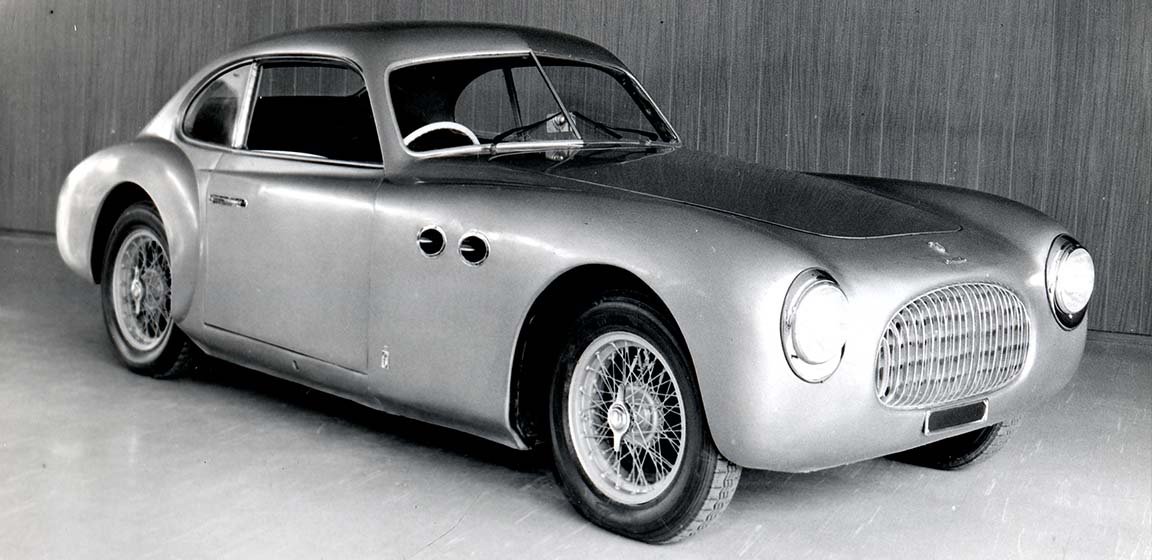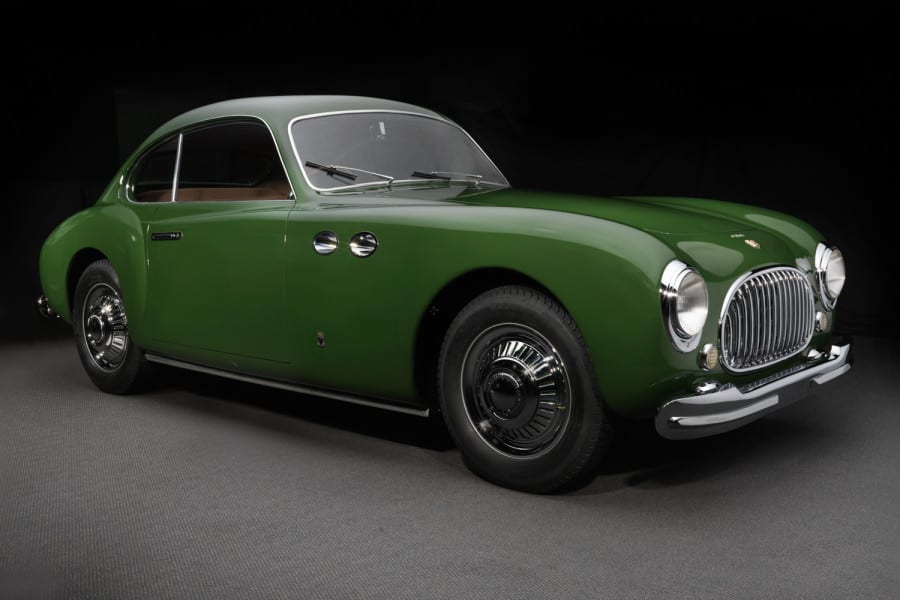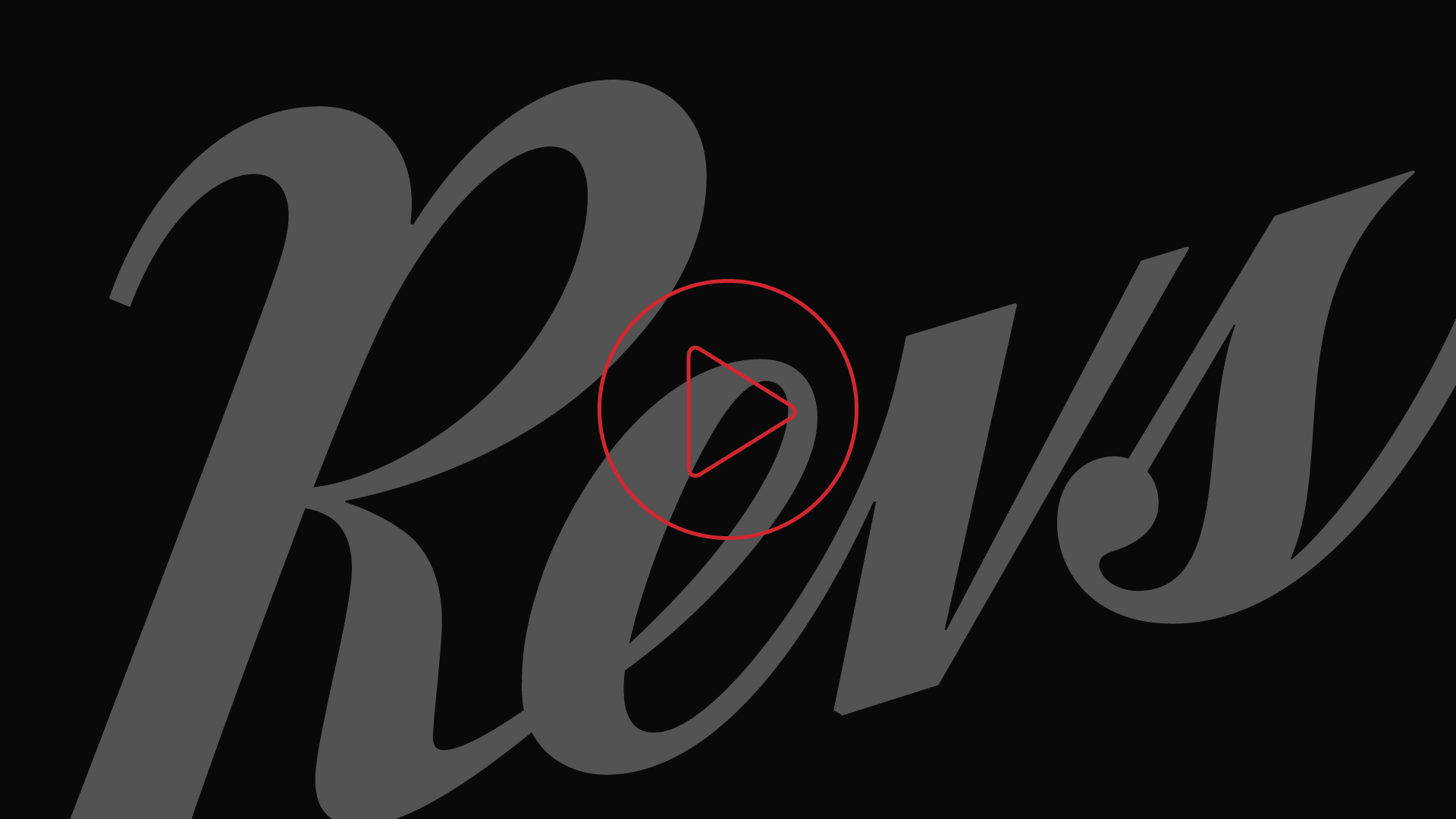Tech Specs
Four-cylinder in-line pushrod engine, 1090 cc, 60 hp at 5500 rpm.
Before/After
1950 Cisitalia


About the 1950 Cisitalia 202 SC Coupe
Italian preeminence in GT styling started here. The Cisitalia coupe created by Battista “Pinin” Farina opened a new school of body design. Pupils on both sides of the Atlantic enrolled. The inspiration for an entire generation of sporting cars, this landmark design personifies the automobile as sculpture.
Consorzio Industriale Sportivo Italia–acronym, Cisitalia–had been established in the thirties by Piero Dusio for the manufacture of sport clothes, tennis rackets and bicycles. In 1939, an exclusive contract for manufacture of all uniforms for Mussolini’s army netted Dusio a tidy fortune. Impatiently he awaited the end of the war to invest it. His next fortune, he was convinced, would be made as an automobile manufacturer.
An ardent amateur driver, Dusio tackled a racecar first, with the considerable help of Fiat designer Dante Giacosa, engineer/driver Piero Taruffi and the legendary Tazio Nuvolari. The Coppa Brezzi in September 1946 saw seven of the brand-new 1100 cc Fiat-derived Cisitalia monopostos on the starting line, a one-two-three Cisitalia finish, and the new marque an overnight sensation. The FIA’s creation of Formula II in 1948 is widely regarded to have been Cisitalia inspired.
The wild success of his first Cisitalia inspired Dusio in two diverse directions. First, because it had performed so nobly in the monoposto, the little 67-cubic-inch Fiat engine might do nicely in a sports car too, provided it wasn’t unnecessarily burdened. Never before was the cause of aerodynamics better served aesthetically. Pinin Farina (his name would be legally made one word in 1961) created a masterpiece. As fast (the Special Sport could top 100 mph) as it was good to look at, the Cisitalia coupe handled like a thoroughbred. Even with a price tag well above $5000, this car had success written all over it. Convertible and roadster versions were available for the open-air-types.
Dusio’s second inspiration was his undoing. The Porsche-designed Grand Prix Cisitalia was as startlingly innovative technically as Pinin Farina’s coupe was in body design. But Dusio’s money ran out mid-development. The GP Cisitalia never raced. The Pinin Farina Cisitalia coupe was consigned to history after few more than 100 had been built. Remnants of Cisitalia were handed over to employee Carlo Abarth.
Photos – Peter Harholdt









